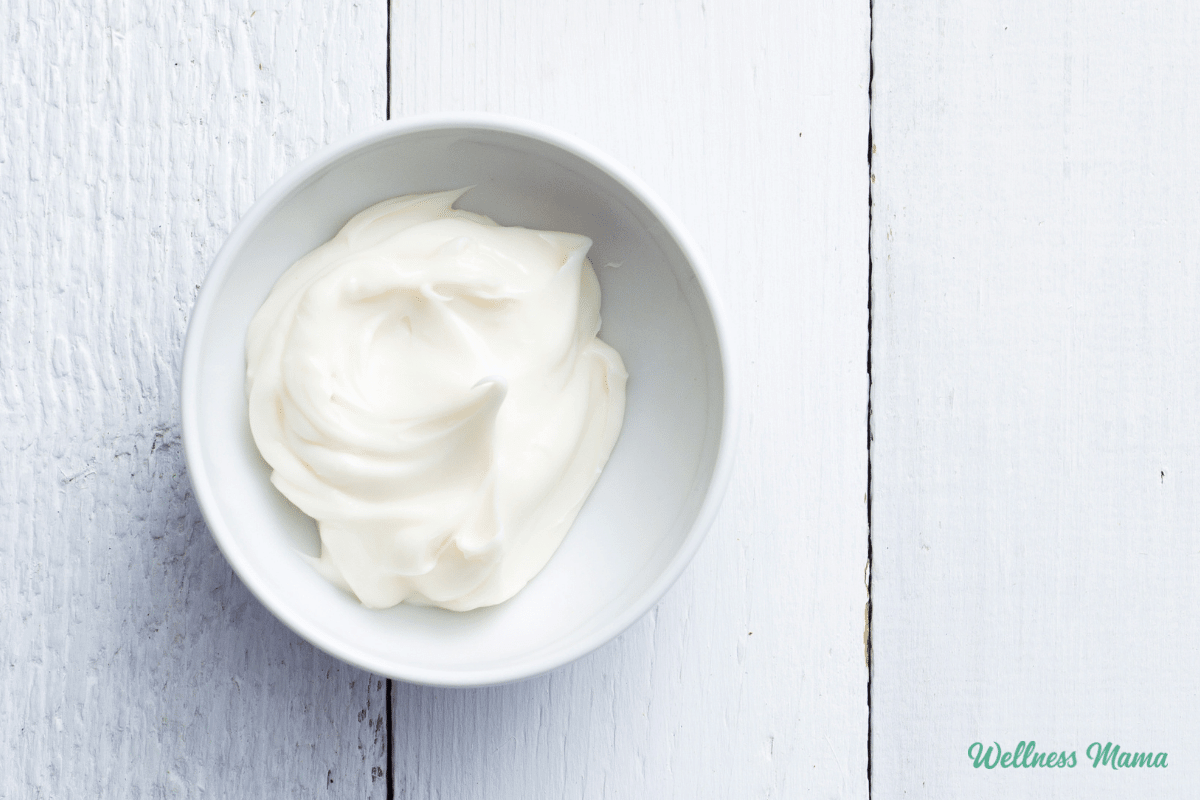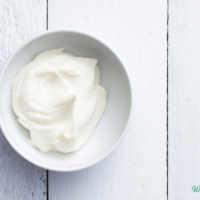If you are still using store-bought lotion on yourself or your family, there are super easy natural alternatives that are fun to make! This homemade lotion recipe has three basic ingredients and takes only ten minutes to whip together.
The basic recipe is an ultra-moisturizing water-free version that lasts for years without preservatives.
NOTE: This is an improved recipe since many people were having trouble getting the temperatures exactly right to get the lotion to emulsify (as per the comments below). This recipe will not have any of those issues!
Making Custom Lotion Blends
Once you master the base recipe, have fun customizing your lotion to your skin type, skin conditions, and desired scent!
There are endless variations, but some of my favorites are:
- Baby Lotion – Infuse the oil with calendula and chamomile before making the lotion.
- Cooling Muscle Rub – Add peppermint, wintergreen, and ginger for sore muscles.
- Anti-aging Face Lotion – Use argan oil and add lavender and patchouli essential oils.
- Lavender and Vanilla Lotion – Add a few drops of lavender and a little natural vanilla extract.
Homemade Lotion Recipe
Materials
- ½ cup almond oil (or jojoba oil, or any other liquid oil)
- ¼ cup coconut oil
- ¼ cup beeswax pellets
- 1 tsp vitamin E oil (optional)
- 2 TBSP shea butter (or cocoa butter, optional)
- essential oils (optional)
- vanilla extract (optional)
Instructions
- Combine the almond oil, coconut oil, beeswax, and shea or cocoa butter if using, in a double boiler or a glass bowl on top of a simmering pan of water.
- Stir occasionally as the ingredients melt.
- When all ingredients are completely melted, add the vitamin E oil if using and any essential oils or scents like vanilla.
- Pour into a glass jar or tin for storage. Small mason jars work perfectly for this. Note: This will not pump well in a lotion pump!
- Use as you would regular lotion. This lotion is ultra-moisturizing and more oily than water-based lotions so you won’t need to use as much. It also has a longer shelf life than some homemade lotion recipes since all ingredients are already shelf stable and no water is added. Use within 6 months for best moisturizing benefits.
Notes
Other Homemade Lotion Recipe Variations
There are lots of ways you can make your own lotion at home. Consider this easy men’s lotion with just a handful of ingredients, or see below for other ways to moisturize!
Lotion Bars
If you want an even easier solution, make these easy lotion bars! It only has three ingredients, takes less time to make, and lasts even longer.
Aloe-Based Homemade Lotion
If you’d prefer a lighter lotion recipe, this aloe-based version is much smoother and not as greasy. Unlike the version above, it does not have an indefinite shelf life and should be used within a month since it does not contain any preservatives.
This recipe is adapted from the recipe I’ve used for years from Frugally Sustainable.
Aloe Lotion Ingredients
- 1 cup aloe vera gel
- 1 tsp + 1 TBSP beeswax pastilles
- 1/2 cup almond oil or jojoba oil (or any other liquid oil)
- 1 tsp vitamin E oil (optional)
- 1 TBSP shea butter (optional)
- essential oils of choice – I like 10 drops of geranium and 5 drops of lime
Aloe Lotion Instructions
- Melt the beeswax, almond oil (or other liquid oil), and shea butter (if using) in a double boiler or glass bowl over a pan of water.
- Remove from heat and pour into a blender or mason jar (if using an immersion blender).
- Let cool to room temperature. You want it to be room temperature and just barely starting to harden around the edges. This will help make sure that the lotion emulsifies correctly.
- Add the vitamin E (if using) and any essential oils.
- Start blending on low using a blender or immersion blender. Very slowly, start adding the aloe vera gel until incorporated. Use a spatula to wipe down the sides and re-blend a few times until fully incorporated.
- Store in a glass jar in the fridge for up to six weeks.
Best Pre-Made Natural Lotions
If reading all that just convinced you that you’d rather just buy a natural lotion than go through the trouble of making one, there are also some great pre-made options. (And no judgment… that’s how I felt the first few times I tried making lotion and toothpaste too!).
These are lotions that I’ve personally used and love and that have safe ingredients and a good rating with the Environmental Working Group:
- Shea Moisture Raw Shea Butter Lotion – I’ve never found a product I didn’t like from this company
- Shea Moisture Head to Toe Ointment – Similar to the first recipe above- no liquid and very moisturizing
- Nourish Organic Body Lotion – Fragrance-free and very highly rated by EWG
- Shea Moisture Olive Oil and Marula – Smells amazing and works really well!
- Nature’s Baby Organic Unscented Lotion – Also very highly rated unscented lotion
Ever made your own lotion? How did it go? Let me know below!



Leave a Reply